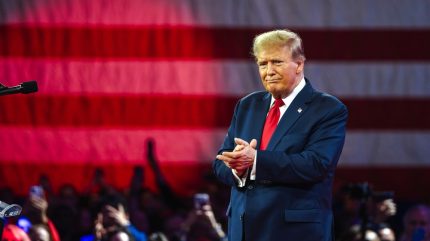
NRF’s study, ‘Estimated Impacts of Proposed Tariffs on Imports: Apparel, Toys, Furniture, Household Appliances, Footwear and Travel Goods’ outlines the potential impacts of former President Donald Trump’s proposed tariffs.
These include a 10-20% universal tariff on imports from all foreign countries and an additional 60-100% tariff on imports specifically from China, affecting six major consumer product categories: apparel, toys, furniture, household appliances, footwear and travel goods.

Discover B2B Marketing That Performs
Combine business intelligence and editorial excellence to reach engaged professionals across 36 leading media platforms.
NRF vice president of supply chain and customs policy, Jonathan Gold, explained that tariffs are a tax borne by US importers, not foreign countries or exporters, stating: “This tax ultimately comes out of consumers’ pockets through higher prices.”
He emphasised retailers rely heavily on imported products and manufacturing components so that they can offer their customers a variety of products at affordable prices.
The study noted that while some US manufacturers may benefit from the tariffs, the gains to US producers and the Treasury from tariff revenue do not outweigh overall losses to consumers.
For example, NRF pointed out that the price of a $50 pair of athletic shoes would jump to $59-$64, adding how within each category, higher prices and loss of spending power would hit low-income families especially hard.

US Tariffs are shifting - will you react or anticipate?
Don’t let policy changes catch you off guard. Stay proactive with real-time data and expert analysis.
By GlobalDataKey findings from the study include
- American consumers’ annual spending power could be reduced by $46bn to $78bn due to these tariffs.
- The proposed tariffs would have a “significant and detrimental” impact on the costs of a wide range of consumer products sold in the United States, particularly on products where China is the major supplier.
- The increased costs, as a result of the proposed tariffs, would be too large for US retailers to absorb and likely raise prices beyond what many consumers are able or willing to pay.
- By category, annual consumer price increases would amount to $13.9bn to $24bn more for apparel; $8.8bn to $14.2bn more for toys; $8.5bn to $13.1bn more for furniture; $6.4bn to $10.9bn more for household appliances; $6.4bn to $10.7bn more for footwear, and $2.2bn to $3.9bn more for travel goods.
- Based on current trade, average tariff rates for all categories examined would exceed 50% in the extreme tariff scenario, up in most cases from single or low double-digits.
As the US election unfolds today (5 November), Just Style has explored the potential impact of a Harris or Trump administration on the apparel sector, while GlobalData has published an executive briefing on the election’s economic implications globally.
Navigate the shifting tariff landscape with real-time data and market-leading analysis. Request a free demo for GlobalData’s Strategic Intelligence here.




